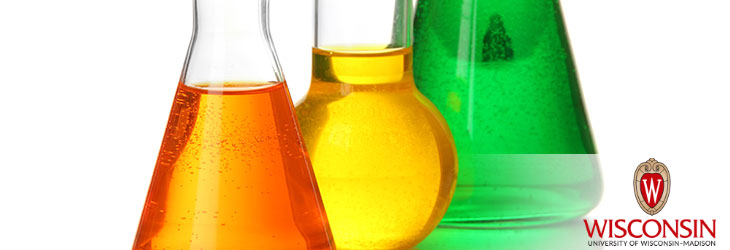Materials & Chemicals

Plasma-Enhanced Functionalization of Carbon-Containing Substrates
WARF: P03334US
Inventors: Ferencz Denes, Sorin Manolache, Luis Emilio Cruz-Barba, Max Lagally, Bradley Larson
The Wisconsin Alumni Research Foundation (WARF) is seeking commercial partners interested in developing an efficient, dry plasma technique for functionalizing surfaces for use in a variety of applications, including flexible, thin-film biosensors that can be integrated into microelectronics.
Overview
Before DNA or proteins can be attached to a surface during the making of microarrays, the surface must be functionalized, i.e., chemically prepared to carry functional groups capable of binding to biomolecules. Conventional methods for functionalizing surfaces typically involve harsh, wet chemical processing, limiting the types of surfaces that can be functionalized to glass slides or inert polymers. These procedures also involve the use of environmentally unfriendly solvents and may take several hours to days to perform.
The Invention
UW-Madison researchers have developed an efficient, dry plasma technique for functionalizing surfaces that holds several advantages over traditional wet chemical approaches. The technique involves two steps. First, a carbon containing substrate is exposed to an inert plasma (e.g., argon or hydrogen) that generates reactive active sites, such as free radicals or ions, on the surface of the substrate. Next, the surface is exposed to volatile compounds in the absence of plasma. The compounds react with the active sites to produce surface-bound spacer chain molecules containing one or more functional groups. These functional groups, in turn, can react with molecules of DNA or protein.
Applications
- Surfaces functionalized using this invention are well-suited for use in a variety of applications, including flexible, thin-film biosensors that can be integrated into microelectronics.
Key Benefits
- Can be used to functionalize a wider range of surfaces, including inexpensive, flexible polymers, than wet chemistry approaches
- Simple and easy
- Highly efficient – treatment times range from 20 to 30 minutes versus 24 to 72 hours for wet chemistry techniques
- Achieves higher densities of bound biomolecules than traditional techniques
- Allows fabrication of microarrays from very small quantities of starting materials
- Uses few chemicals and no solvents or catalysts, minimizing cost and disposal issues
- Unlike conventional approaches, this invention allows the functionalization of inert surfaces, such as polypropylene, polyethylene, Teflon and diamond, without pre-oxidation or irradiation steps.
- Treated surfaces do not exhibit non-specific adsorption of biomolecules.
- Spacer chain length can be readily changed to accommodate different applications.
Additional Information
For More Information About the Inventors
Tech Fields
For current licensing status, please contact Jeanine Burmania at [javascript protected email address] or 608-960-9846